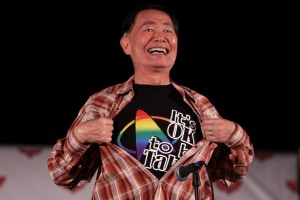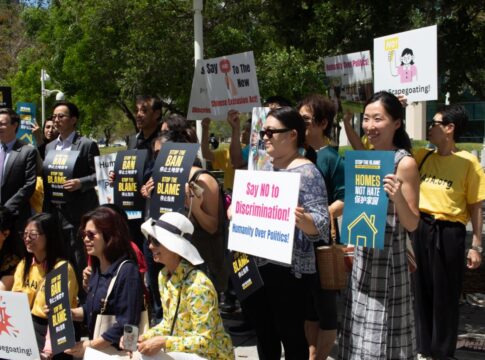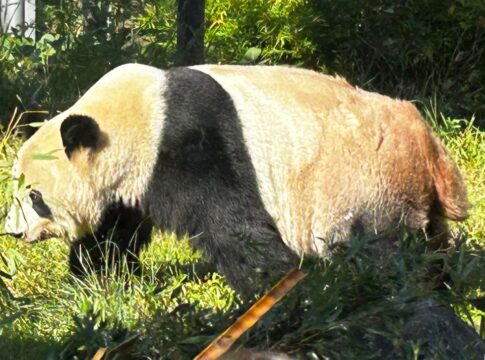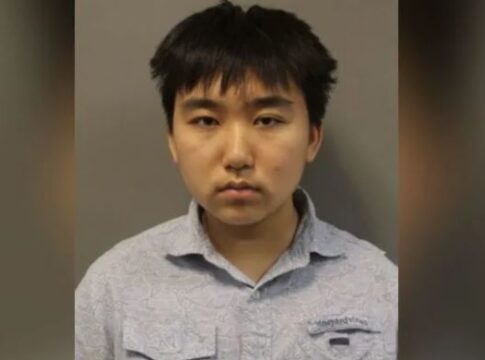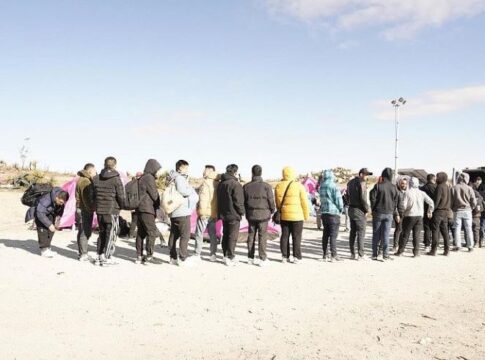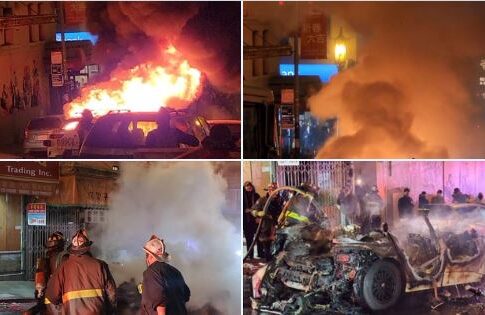Jennifer Kroot is the producer and director of It Came From Kuchar (2009) and To Be Takei which premiered at the 2014 Sundance Film Festival and opens in theaters today. I spoke with Kroot about the making of the documentary, which follows the life and career of George Takei. The film deftly captures Takei’s eclectic range of experiences: from his well-known portrayal of Hikaru Sulu on Star Trek to his imprisonment in the Japanese American internment camps as a child. Included is a humorous and loving portrayal of George and his husband, Brad Takei. Their idiosyncratic yet enduring relationship is the centerpiece of the film.
How did you present the idea of a documentary to George Takei?
I wrote a letter to his agent and to him and his husband, Brad, that introduced myself, explained who I was and that I was interested in so many subjects in [Takei’s] life. I told them I wanted to take on a project that would capture everything—from [Takei’s] time on Star Trek to his childhood in the Japanese American internment camps. It’s a complicated range to connect and I remember Brad asking me at the time: “well how are you going to include all these things?”
Personally, I like pop culture and the density of archival footage and working with it to make a film that is layered and multidimensional. I knew I could include Takei’s history and also connect it to the much lighter aspects of his everyday life. I wanted to capture that range.
How long did it take to make the film?
The whole film took three and half years to make. I would say the first two and half years accounted for 90% of the filming. Every month or two I spent several days with [George and Brad]. We would film if their schedules allowed and if they were doing something unique, like attending a comic book convention. The editing took the last year, and was also interspersed with last minute shoots of footage we needed.
Did you find it hard to give enough focus to all the different elements of Takei’s life and career?
Well it’s hard to strike that balance, but I feel that I did. It’s like a very complicated puzzle. I knew I had to have a great editor, which is why I sought out Bill Weber who is incredibly experienced and talented. Even so, our first cut was 3 hours (laughs). But we continued to fine tune things until the balance was right.
LATEST STORIES
How much did you know about George’s time in the Japanese American internment camps going into the filming process?
I had read his autobiography To the Stars, which he had written before he was openly ‘out’ as a gay man. It focuses mostly on his experiences in the internment camps as a child so I knew the story pretty well. But I didn’t know how many internment camps there were; that there were internment camps as far east as Arkansas; I didn’t know that there were 120,000 Japanese Americans imprisoned at that time. Through the filming I was introduced to a lot of pretty haunting memories from him personally and the Japanese American community as a whole.
What was it like going with George and Brad to Arkansas to see one of the camps again?
It was intense. I mean I knew that all these places were very remote but we literally drove miles and miles through a shantytown to get to the site. George’s memory was that it was built on a swamp but I guess it had been drained before we visited.
When we were there we were told by the people from the historical preservation group that people had been coming to the former camp and shooting at the memorial statues that were there. There was one statue with an eagle mounted on the top that I guess people would just come and shoot at. It was disturbing to hear that.
There was also a graveyard and a lot of the graves were for infants. You know, there was pretty bad healthcare for those at the camps so a lot of these babies died very young because they couldn’t get adequate medical support.
It was hard to believe that it was one of the places where people were imprisoned. There were very few remnants that would indicate a prison.
What was the most unexpected thing you learned about Takei in the process of making this film?
What I learned about George is that he actually is as positive as he seems. And, I learned a lot about George’s relationship with Brad. I really admire their enduring relationship with all their interesting dynamics. I also learned that [George] definitely doesn’t like William Shatner (laughs).
There’s a lot of unexpected comedy in the film, like the scene where Brad and George are spreading Brad’s mother’s ashes and they start to blow everywhere. Why did you include that scene?
I love that scene. It really incorporates so many aspects of life: it starts out as this mystical, profound event but then the world takes over the way it does. The wind comes up and the ashes get blown around. And, then the dynamics come out between [George and Brad]. But, then there are also some really sincere moments of Brad opening up about his Mother and what she meant to him. So, it’s all the emotions of life in this little encapsulated scene.
What do you want the viewer to leave the theater with after watching your film?
I want people to see this relationship that’s endured a lot and happens to be a marriage between two men. You don’t see that many portraits of gay marriages. The ability to relate to a long-term relationship like that regardless of the orientation of the people involved is unique. I want people to fall in love with that.

